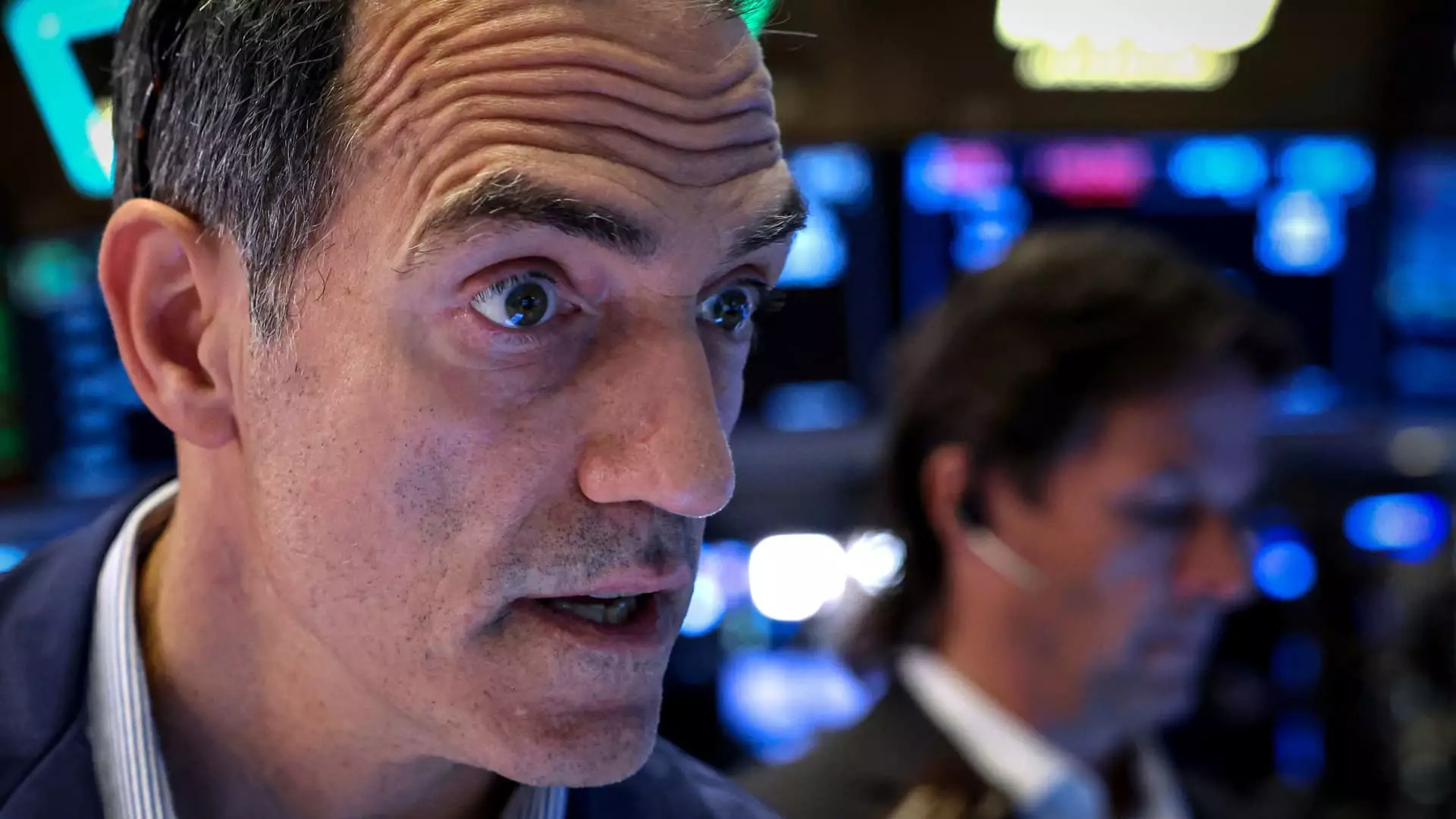Investors often experience a rollercoaster of emotions as they navigate the complexities of the stock market. The latest developments as reported by financial news—highlighting shifts in major averages, corporate earnings, and economic indicators—showcase the volatile environment that characterizes today’s investing landscape. With the daily newsletter “Stocks @ Night” providing an after-hours snapshot of the market, we are given a unique view of what drives investor decisions and market reactions.
One of the most eye-catching stories recently has been that of Nvidia, whose stock demonstrated significant volatility throughout the day. After starting at a low point, Nvidia shares surged by approximately $10, concluding the day with a notable 8% increase. The catalyst for this turnaround came during the Communacopia conference, where CEO Jensen Huang emphatically stated that the demand for Nvidia’s Blackwell chip is robust, dismissing any fears surrounding potential disruptions in production. His optimism is palpable and evidently contagious among investors, resulting in a surge in trading volumes.
However, while Nvidia’s stock has seen substantial gains—136% in the year 2024—it remains 17% shy of its previous high from June 20. This nuance reflects the dual realities investors face: overwhelming potential and past constraints. This intricacy emphasizes the necessity for investors to not only analyze immediate performance but to also consider historical benchmarks when assessing company health.
The performance of the technology sector, with a 3.25% rise in the S&P tech index, also merits attention. This upturn signals a potential recovery following a tumultuous period characterized by rising bond yields, which had previously pressured stock valuations. As economic indicators fluctuate, investors must remain vigilant about the interdependencies within financial markets, especially as bonds, equities, and sectors like real estate and utilities exhibit varying sensitivities to these changes.
The recent volatility in bond yields has become a focal point for market analysts. A drastic rebound, wherein the S&P 500 made a remarkable 154-point recovery after initial losses, highlights the increasingly complex relationship between bond performance and stock market sentiment. Key figures, such as CNBC’s market analyst Mike Santoli, assert that rising yields can uplift investor confidence as they signal economic stability, rather than a looming recession.
This convoluted relationship is critical, particularly as higher yields historically trigger declines in stock prices. Investors’ fears have been stoked by rapid fluctuations, primarily linked to macroeconomic conditions. When bond yields fall abruptly, it can raise red flags concerning future economic conditions, consequently initiating a wave of selling in equity markets. With yields stabilizing, the potential for a bullish sentiment appears plausible.
Sub-sectors within the S&P have been particularly indicative of this trend. For instance, real estate stocks have shown an 18% increase over the past three months, largely due to the allure of yield in a declining rate environment. Utilities and financial sectors also reflect similar positive performances, which could entice conservative investors seeking stable returns. In contrast, energy and communication services have notably underperformed, demarcating the uneven growth trajectories within the market.
The insurance industry is currently navigating turbulent waters as investor concerns merge with political uncertainties. Recent downturns for significant insurers—evidenced by stocks like Travelers and Aon—have been attributed to anxieties surrounding potential electoral outcomes that could influence litigation practices and regulatory environments. The possibility of a win by Vice President Kamala Harris raises alarms regarding the industry’s operational landscape, affecting investor confidence.
Despite these concerns, companies such as Progressive and Arthur J. Gallagher have managed to thrive, evidencing resilience in a sector generally considered stable. This duality showcases the intricate dynamics at play within the financial markets, where individual company performances can diverge significantly from broader industry trends.
Beyond traditional equities, commodities also warrant consideration in the current market analysis. The recent spike in cocoa prices, driven by negotiations for increased farmer compensation in Ghana and Ivory Coast, signals shifts in global agriculture impacts. Such moves can influence related stocks, like Hershey, which unexpectedly found its shares declining despite broader trends favoring commodity prices.
The intertwining of various market sectors—from technology to commodities and insurance—paints a complex picture for investors. Each piece of information carries potential implications for market strategies and future economic outlooks.
Staying attuned to the multifaceted nature of the market is crucial for making informed investment decisions. As investors look toward the following sessions, understanding the nuances of rise and fall, optimism and skepticism, will be the key to navigating this dynamic economic landscape.

